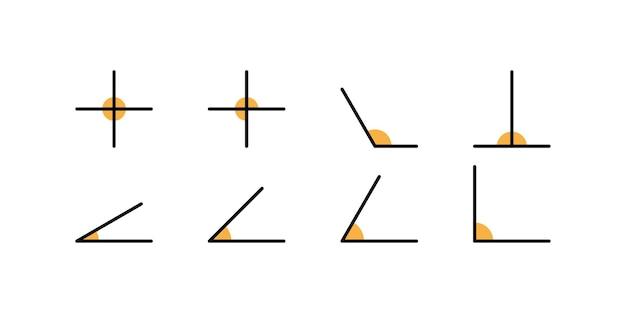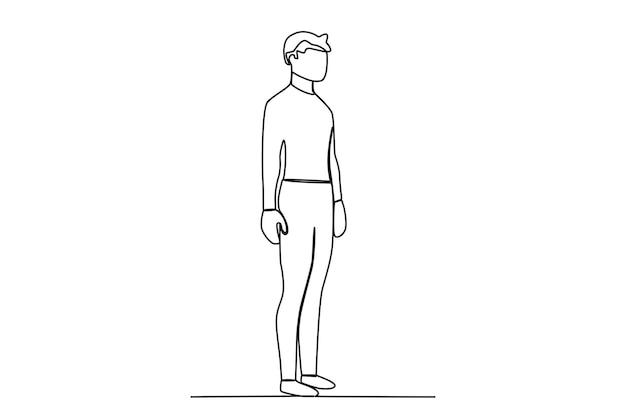Welcome to our blog post that dives into the intriguing world of triangle angles! If you’ve ever wondered about the possibility of drawing a triangle with two obtuse angles, you’re in the right place. We will explore the concept, shed light on what defines an obtuse triangle, and answer common questions such as whether a triangle can have all angles equal to 60 degrees.
Triangles are fascinating geometric shapes that possess various angles, and understanding their properties can be both fun and educational. So, let’s embark on this geometric adventure as we unlock the secrets behind triangles with obtuse angles and discover the possibilities they offer.
Grab a cup of coffee, get comfortable, and let’s explore the boundaries of triangle angles together!
Can We Draw A Triangle With Two Obtuse Angles
Overview of Obtuse Angles in Triangles
When it comes to triangles, we often think of sharp and acute angles or perfectly balanced right angles. But have you ever wondered if a triangle can have not one, but two obtuse angles? Buckle up, because we’re about to take you on a mathematical rollercoaster!
Understanding Obtuse Angles
First things first, let’s do a quick recap of what an obtuse angle is. In simple terms, an obtuse angle is any angle that measures more than 90 degrees but less than 180 degrees. Picture it like a triangle with its mouth wide open, ready to gobble up some numbers!
Exploring Triangle Angles
Now, let’s dive into the main question – can a triangle have two obtuse angles? Sadly, my friend, the answer is a big no. In a triangle, the sum of all the interior angles must always be equal to 180 degrees. Since we know that one obtuse angle is already more than 90 degrees, the sum of two obtuse angles would exceed 180 degrees, which breaks this fundamental rule. It’s like trying to squeeze an elephant into a mini Cooper – it’s just not gonna fit!
The Proof is in the Math
Now, let’s take a peek at the math behind this rule. If we denote the three angles of a triangle as A, B, and C, the sum of the angles is expressed as A + B + C = 180 degrees. Let’s assume we have two obtuse angles, A and B. If both A and B are greater than 90 degrees, the sum of A + B will definitely be larger than 180 degrees. And as we mentioned earlier, that just doesn’t fly in the land of triangles!
Limitations of Triangle Angles
Triangles are fascinating creatures that follow specific rules. They want to keep things balanced and fair, ensuring that every angle has a place in the grand scheme of things. While we can’t have a triangle with two obtuse angles, we can certainly find one with one obtuse angle and other varying angles like acute or right angles. So don’t worry, obtuse angle enthusiasts, there’s still plenty of room to play!
In the adventurous realm of triangles, each angle has its role to play. Although two obtuse angles may seem like a wild idea, the mathematical laws of triangles dictate otherwise. So next time you draw a triangle, remember that balance is key, and those obtuse angles will have to make room for their acute and right-angle buddies. Happy triangle exploring, math enthusiasts!
FAQs About Drawing a Triangle with Two Obtuse Angles
Welcome to our comprehensive FAQ section on the topic of drawing a triangle with two obtuse angles. We know you have questions, and we’re here to provide you with entertaining and informative answers. So let’s dive right in!
What Shapes Can Have 2 Obtuse Angles
While most shapes we commonly encounter have acute (less than 90 degrees) or right angles exactly equal to 90 degrees, there is one common shape that can have two obtuse angles – it’s a star! Yes, those cool, pointy star shapes can indeed have two angles greater than 90 degrees. But when it comes to triangles, it’s a whole different story!
Can a Triangle Have All Angles Equal to 60 Degrees
Absolutely! When all three angles of a triangle are equal to 60 degrees, we call it an equilateral triangle. In this case, none of the angles are obtuse, since 60 degrees is less than 90 degrees. So, in short, no obtuse angles in an equilateral triangle!
What Defines an Obtuse Triangle
An obtuse triangle is a special type of triangle that has one angle larger than 90 degrees. This means that at least one angle in the triangle is obtuse, while the other two angles are acute (less than 90 degrees).
Can You Draw a Triangle with Two Acute Angles? Give Reason.
Absolutely! In fact, most triangles you encounter will have two acute angles. You can easily draw such a triangle by connecting three points that are not in a straight line. The sum of the angles in any triangle is always 180 degrees, so if two angles are less than 90 degrees, the third angle must also be acute.
Can You Have a Triangle with Two Obtuse Angles
No, it is not possible to have a triangle with two obtuse angles. Why? Because the sum of the three angles in a triangle must always equal 180 degrees. If two angles are already greater than 90 degrees (obtuse), the sum of these two angles will be more than 180 degrees, which violates the rule.
How Many Obtuse Angles Can a Right Triangle Have
None! A right triangle has one right angle exactly equal to 90 degrees. Since an obtuse angle is greater than 90 degrees, it is not possible to have an obtuse angle and a right angle in the same triangle.
Which Angles Can Form a Triangle
Any three angles that add up to 180 degrees can form a triangle. The most common triangle is the one with three angles less than 90 degrees, known as an acute triangle. But triangles can also have one obtuse angle and two acute angles, or they can have three equal angles of 60 degrees, like in an equilateral triangle.
Can You Draw a Triangle with an Obtuse Angle
Absolutely! Drawing a triangle with an obtuse angle is simple. Start by drawing a line segment. Then, on one of its endpoints, draw another line segment that forms an angle greater than 90 degrees with the original line. Finally, complete the triangle by drawing the third side, which connects the remaining endpoints of the two line segments.
Can You Have Two Obtuse Angles in a Triangle
No, you cannot have two obtuse angles in a triangle. As mentioned earlier, the sum of the angles in a triangle must always be equal to 180 degrees. If two angles are already greater than 90 degrees (obtuse), their sum will be greater than 180 degrees, which is not possible for a triangle.
Can an Obtuse Triangle Be Isosceles
Yes, it is possible for an obtuse triangle to be isosceles. An isosceles triangle has two equal angles and two equal sides. While we often associate isosceles triangles with having acute angles, they can also be obtuse. In this case, two of the angles will be equal and greater than 90 degrees, while the third angle will be acute.
Can You Have a Triangle with All Acute Angles
Yes, you can! A triangle with all angles less than 90 degrees is called an acute triangle. In fact, most triangles we encounter in everyday life, such as those used in buildings or in geometric shapes, are acute triangles.
Does an Obtuse Triangle Have Parallel Lines
No, an obtuse triangle does not have parallel lines. Parallel lines are lines that never intersect, no matter how far they are extended. In an obtuse triangle, the three sides intersect at different points, so there are no parallel lines within it.
Can a Triangle Have Two Acute Angles
Yes, it can! In fact, a triangle can have two acute angles and one obtuse angle. This type of triangle is called an obtuse-angled triangle. So, don’t worry if you encounter a triangle with two acute angles – it’s perfectly normal!
Can Two Obtuse Angles Be Supplementary
No, two obtuse angles cannot be supplementary. Supplementary angles are two angles that add up to exactly 180 degrees. Since an obtuse angle is already greater than 90 degrees, adding another obtuse angle to it will result in a sum greater than 180 degrees.
Can You Draw a Triangle with Two Obtuse Angles? True or False
False. As mentioned earlier, it is not possible to draw a triangle with two obtuse angles. The sum of the angles in any triangle must equal 180 degrees, so if two angles are already obtuse, the sum will exceed 180 degrees.
Can You Draw a Triangle with Three Obtuse Angles
No, it is not possible to draw a triangle with three obtuse angles. The sum of the angles in any triangle must always be equal to 180 degrees. Since obtuse angles are greater than 90 degrees, three obtuse angles would result in a sum greater than 180 degrees, which violates the rule.
Can a Triangle Have Two Parallel Sides
No, a triangle cannot have two parallel sides. By definition, a triangle is a polygon with three sides and three angles. For two sides to be parallel, they would never intersect, which contradicts the requirement that all three sides of a triangle must intersect at three distinct points.
How Many Obtuse Angles Does an Obtuse Triangle Have
An obtuse triangle has only one obtuse angle. An obtuse triangle is defined as having one angle greater than 90 degrees, while the other two angles are acute.
Can a Triangle Have Two Right Angles? True or False
False. A triangle cannot have two right angles because the sum of the angles in a triangle must always be equal to 180 degrees. If one angle is already a right angle (90 degrees), there would not be enough degrees left for another right angle.
How Do You Construct a Triangle with One Obtuse Angle
To construct a triangle with one obtuse angle, start by drawing a line segment. Then, on one of its endpoints, draw another line segment that forms an angle greater than 90 degrees with the original line. Finally, complete the triangle by drawing the third side, which connects the remaining endpoints of the two line segments.
Why Can’t a Triangle Contain Two Obtuse Angles
A triangle cannot contain two obtuse angles because the sum of the angles in any triangle must always equal 180 degrees. If two angles were already obtuse (greater than 90 degrees), their sum would be greater than 180 degrees, which is not possible for a triangle.
We hope this FAQ section has provided you with all the answers you were seeking about drawing triangles with obtuse angles. If you have any more questions, feel free to reach out to us!

